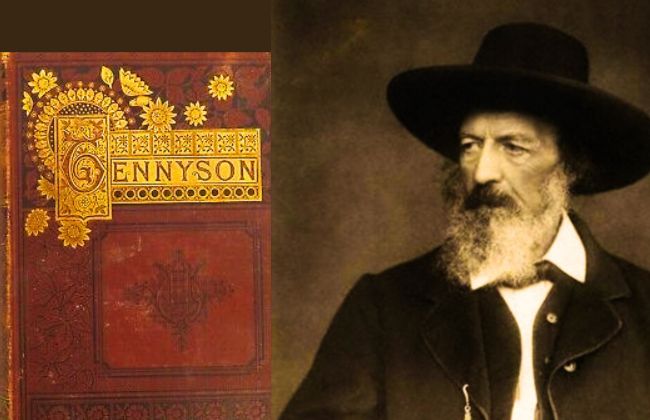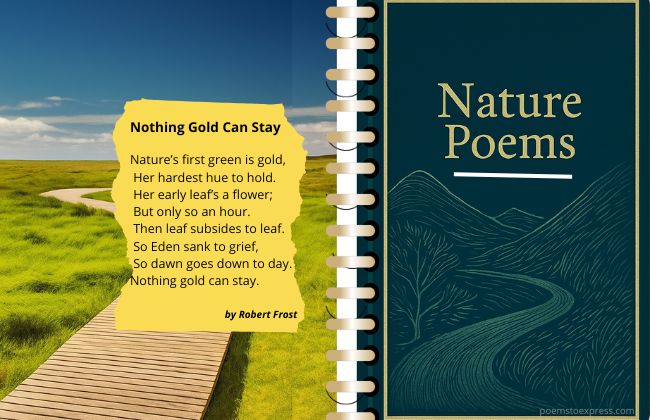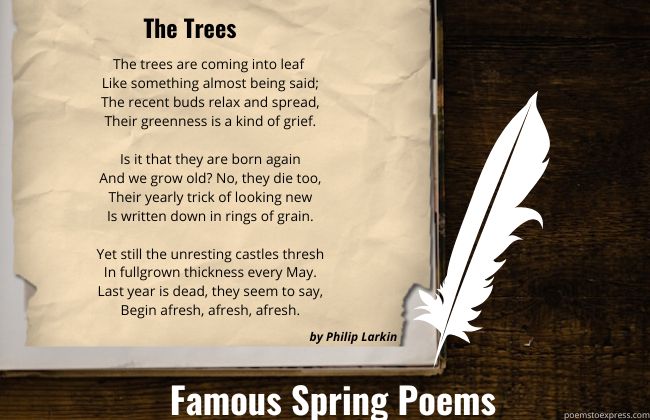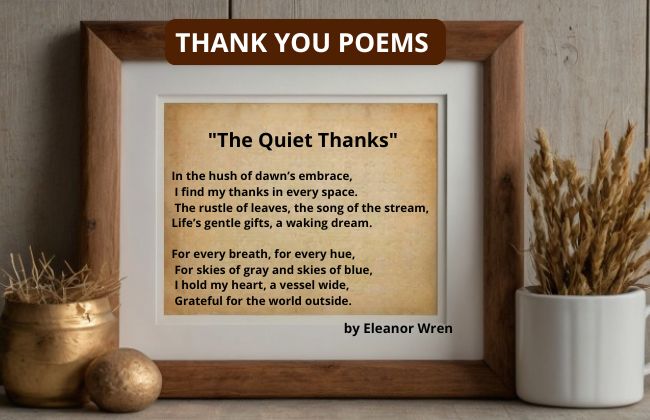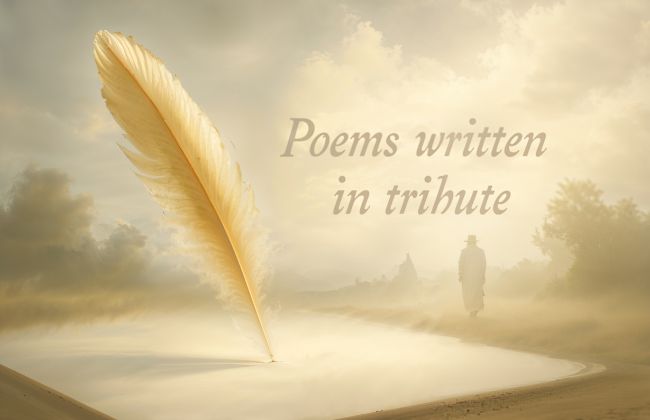Alfred Lord Tennyson, one of the most celebrated poets of the Victorian era, left an indelible mark on English literature with his masterful command of language and profound exploration of human emotions.
His works resonate with themes of love, loss, nature, and the passage of time, offering poignant reflections on both personal and collective experiences. Tennyson possessed an extraordinary ability to weave music into his verses, crafting a rhythm and melody that elevate his poetry to timeless art.
From the evocative imagery in “The Lady of Shalott” to the introspective musings of “Ulysses,” his poems capture the essence of Victorian ideals while speaking to universal truths that remain relevant today.
Each piece reflects his keen insights into the human condition, shaped by both classical influences and his own life’s triumphs and tragedies.
Join us as we explore ten of Tennyson’s finest poems, celebrating the enduring brilliance of his artistry and the timeless legacy of England’s Poet Laureate.
Table of Contents
1) “The Charge of the Light Brigade”
Alfred Lord Tennyson’s “The Charge of the Light Brigade” is a significant poem that captures the valiant yet tragic assault by British cavalry during the Battle of Balaclava in the Crimean War.
Written in 1854 and published shortly thereafter, Tennyson honors the courage of the Light Brigade, who charged headlong into enemy fire due to a misunderstood order.
The poem employs a strong rhythmic meter, reminiscent of galloping horses, and distinctive repetition to emphasize the bravery and the fateful advance of the soldiers.
It’s an enduring example of Tennyson’s mastery in portraying heroism amidst war’s grim reality. “The Charge of the Light Brigade” remains a testament to the valor of those who obeyed their commands despite the dire consequences, marking its place as one of Tennyson’s most memorable works.
I
Half a league, half a league,
Half a league onward,
All in the valley of Death
Rode the six hundred.
“Forward, the Light Brigade!
Charge for the guns!” he said.
Into the valley of Death
Rode the six hundred… See full poem
2) “Ulysses”
The poem was indeed published in 1842 and is one of Tennyson’s most celebrated works. It is a dramatic monologue in which the ancient Greek hero Ulysses (Odysseus) reflects on his desire for further adventure despite his old age, expressing dissatisfaction with his mundane life as king and his yearning to explore and experience new adventures.
The poem explores themes of restlessness, resilience of the human spirit, and the search for meaning beyond daily life’s familiar confines.
The tone is indeed resolute and contemplative, capturing Ulysses’ reflections on his past exploits and his desire for future adventures.
The line “To strive, to seek, to find, and not to yield” is indeed a famous and powerful encapsulation of Ulysses’ indomitable spirit, serving as a rallying cry for perseverance and courage.
It little profits that an idle king,
By this still hearth, among these barren crags,
Match'd with an aged wife, I mete and dole
Unequal laws unto a savage race,
That hoard, and sleep, and feed, and know not me.
I cannot rest from travel: I will drink
Life to the lees: All times I have enjoy'd
Greatly, have suffer'd greatly, both with those
That loved me, and alone, on shore, and when
Thro' scudding drifts the rainy Hyades… See full poem
3) “The Lady of Shalott”
“The Lady of Shalott” is one of the most enduring poems by Alfred Lord Tennyson, first published in 1832 and revised in 1842.
This Victorian ballad tells the tale of a woman who lives isolated in a tower on the island of Shalott, cursed to weave a tapestry without ever looking directly at the outside world. She views the reflection of Camelot and its inhabitants through a mirror.
The poem captures the conflict between an artist’s desires and the constraints of her reality. The lady eventually yields to temptation and gazes upon Sir Lancelot, triggering the curse. Her tragic end, floating down the river to Camelot, and Sir Lancelot’s poignant reaction, “She has a lovely face; God in his mercy lend her grace,” underline the sense of inevitable fate and the pathos of her unfulfilled life.
With its lyrical, musical quality, and the themes of art, isolation, and unrequited love, Tennyson’s work resonates with readers and has remained a staple in the canon of English literature.
Part I
On either side the river lie
Long fields of barley and of rye,
That clothe the wold and meet the sky;
And thro' the field the road runs by
To many-tower'd Camelot;
And up and down the people go,
Gazing where the lilies blow
Round an island there below,
The island of Shalott… See full poem
4) “In Memoriam A.H.H.”
“In Memoriam A.H.H.” is one of Alfred Lord Tennyson’s most profound poetic works, reflecting his deep sorrow after the death of his friend Arthur Henry Hallam.
The poem stands out as a masterful exploration of grief, showcasing Tennyson’s intricate weaving of emotion through the lens of Victorian spirituality and the questioning of faith in the wake of loss.
Taking the form of a requiem and written across 131 sections, the narrative power of “In Memoriam A.H.H.” captures the fluctuating emotions from despair to acceptance.
Tennyson’s use of the elegiac stanza brings a rhythmic and melodic quality to the poem, echoing the themes of hope and consolation amidst suffering.
Notably, the poem also includes the famous lines “Ring out, wild bells,” which are often quoted around the New Year. It stands as a testament to Tennyson’s literary skill and the human experience of mourning.
Strong Son of God, immortal Love,
Whom we, that have not seen thy face,
By faith, and faith alone, embrace,
Believing where we cannot prove;
Thine are these orbs of light and shade;
Thou madest Life in man and brute;
Thou madest Death; and lo, thy foot
Is on the skull which thou hast made.
Thou wilt not leave us in the dust:
Thou madest man, he knows not why,
He thinks he was not made to die;
And thou hast made him: thou art just… See full poem
5) “Break, Break, Break”
Published in 1842, it exemplifies Tennyson’s mastery of melody and rhythm, conveying a deep sense of loss and longing.
The poem is set against the backdrop of an indifferent sea, representing the perpetual motion of life in contrast to human grief and stasis. Its repetitive, onomatopoeic opening line mirrors the relentless breaking of waves against the shore, echoing the speaker’s inner turmoil.
Tennyson’s use of simple, yet powerful language resonates with the reader, as it expresses the universal themes of time’s passage and the unyielding pain of personal bereavement. The poet’s yearning for the touch of a lost loved one and the sound of a voice that is still, touches upon the heartache of mourning.
Despite its brevity, “Break, Break, Break” leaves a lasting impact, encapsulating the melancholic acceptance of life’s continuance amidst the ruins of personal sorrow.
Break, break, break,
On thy cold gray stones, O Sea!
And I would that my tongue could utter
The thoughts that arise in me.
O, well for the fisherman's boy,
That he shouts with his sister at play!
O, well for the sailor lad,
That he sings in his boat on the bay!... See full poem
6) “Crossing the Bar”
“Crossing the Bar,” stands out as a notable poem reflecting on mortality and the soul’s voyage into the afterlife. Tennyson employs a maritime metaphor, likening death to crossing a sandbar that separates a tranquil harbor from the vast sea.
This sea symbolizes the boundless hereafter. The poem’s serene tone suggests acceptance and hope, rather than fear.
Tennyson’s request to position “Crossing the Bar” at the end of his poetry collections highlights its significance to him as a summing-up of his life and work.
Its distinguished place in the canon of Victorian poetry is due not only to its profound subject but also to the tranquil and resolved perspective it offers on the universal human experience of death.
Sunset and evening star,
And one clear call for me!
And may there be no moaning of the bar,
When I put out to sea,
But such a tide as moving seems asleep,
Too full for sound and foam,
When that which drew from out the boundless deep
Turns again home… See full poem
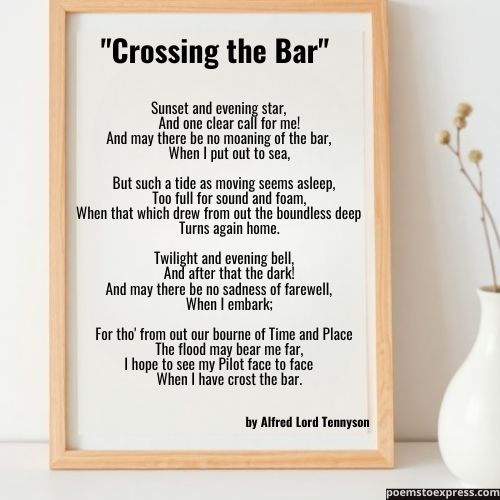
7) “The Lotos-Eaters”
“The Lotos-Eaters” by Alfred Lord Tennyson, inspired by Homer’s Odyssey, explores the desire for escapism in the face of duty.
Originally published in 1832 and significantly revised for the 1842 edition, the poem describes sailors who, after consuming the narcotic lotus, wish to abandon their journey to indulge in euphoric complacency.
Through melodic verses and evocative language, Tennyson captures the tension between reality and desire, and the allure of an effortless existence.
The poem’s almost hypnotic structure, divergent from Tennyson’s more patriotic themes, offers a reflection on the human longing for rest and the ephemeral nature of existence.
"Courage!" he said, and pointed toward the land,
"This mounting wave will roll us shoreward soon."
In the afternoon they came unto a land
In which it seemed always afternoon.
All round the coast the languid air did swoon,
Breathing like one that hath a weary dream.
Full-faced above the valley stood the moon;
And like a downward smoke, the slender stream
Along the cliff to fall and pause and fall did seem… See full poem
8) “Tithonus”
The poem articulates the myth of Tithonus, a mortal granted eternal life but not eternal youth. Tennyson masterfully captures the anguish of Tithonus, who ages endlessly while being unable to die.
This lyrical work is a poignant meditation on the consequences of Tithonus’s wish for immortality without considering the full ramifications.
The narrative unfolds as Tithonus laments his unending existence, contrasting the natural cycle of life and death from which he is excluded. The melancholy tone and rich imagery serve to underscore the poem’s exploration of the human condition.
Tennyson’s Tithonus is renowned for both its emotional depth and its technical prowess, demonstrating the poet’s signature command of language and rhythm.
The woods decay, the woods decay and fall,
The vapours weep their burthen to the ground,
Man comes and tills the field and lies beneath,
And after many a summer dies the swan.
Me only cruel immortality
Consumes: I wither slowly in thine arms,
Here at the quiet limit of the world,
A white-hair'd shadow roaming like a dream
The ever-silent spaces of the East,
Far-folded mists, and gleaming halls of morn… See full poem
9) “Locksley Hall”
The poem is a monologue by a young man, where he expresses his emotions after a romantic disappointment. It captures a broad spectrum of feelings, from youthful exuberance to bitter disillusionment.
Tennyson’s use of lyrical verse conveys the complex inner life of the protagonist while exploring themes such as the social expectations of the Victorian era.
The poem is notable for its vivid imagery, most prominently the descriptions of nature and the changing seasons around Locksley Hall, which reflect the protagonist’s turbulent emotional state.
Tennyson skillfully intertwines personal loss with the societal changes of the time, predicting a future transformed by the coming of the industrial age, all while maintaining a rhythmic and melodic quality that has come to be associated with his work.
Comrades, leave me here a little, while as yet 't is early morn:
Leave me here, and when you want me, sound upon the bugle-horn.
'T is the place, and all around it, as of old, the curlews call,
Dreary gleams about the moorland flying over Locksley Hall;
Locksley Hall, that in the distance overlooks the sandy tracts,
And the hollow ocean-ridges roaring into cataracts.
Many a night from yonder ivied casement, ere I went to rest,
Did I look on great Orion sloping slowly to the West… See full poem
10) “Tears, Idle Tears”
The poem stands out for its vivid imagery and complex emotional undercurrents. It delves into themes of loss, nostalgia, and the bittersweet nature of human memory.
The lyric’s opening lines, “Tears, idle tears, I know not what they mean,” capture a sense of profound sorrow and a deep, ineffable despair. The tears are described as rising from a “divine despair,” suggesting a spiritual or existential depth to the speaker’s emotional state.
Tennyson employs powerful natural imagery to deepen the sense of longing for days gone by. The reference to the “happy autumn-fields” and friends “that bring our friends up from the underworld” metaphorically speaks to the cyclical nature of life and death.
The poem’s melancholic tone echoes the Victorian era’s preoccupation with themes of mourning and loss, as well as Tennyson’s personal experiences with grief.
“Tears, Idle Tears” remains a testament to Tennyson’s mastery of language and emotion, securing its place among his most beloved works.
Tears, idle tears, I know not what they mean,
Tears from the depth of some divine despair
Rise in the heart, and gather to the eyes,
In looking on the happy autumn-fields,
And thinking of the days that are no more.
Fresh as the first beam glittering on a sail,
That brings our friends up from the underworld,
Sad as the last which reddens over one
That sinks with all we love below the verge;
So sad, so fresh, the days that are no more… See full poem
Tennyson’s Influence
Alfred Lord Tennyson’s work significantly impacted the literary world of his time and beyond. Appointed as Poet Laureate in 1850, he held the position for a record 42 years, demonstrating his lasting influence and popularity.
His poems often addressed the prevailing concerns of the Victorian era, such as the conflict between science and religion or the challenges of industrialization.
Impact of Tennyson’s Poetry:
- Innovative Style: He experimented with narrative poetry, using music-like qualities and varied meters.
- Cultural Commentary: His works frequently commented on and critiqued the culture and politics of his time.
- Thematic Depth: Themes of heroism, the human spirit, and the nature of God are recurrent in his poetry.
- Legacy: Tennyson’s poetry influenced subsequent poets and writers, helping to shape the literary canon.
Literary Techniques
Alfred, Lord Tennyson’s poetry is renowned for its rich use of language and variety of literary devices. These techniques enhance the thematic depth and aesthetic appeal of his works.
Use of Imagery
Tennyson’s poetry is characterized by vivid imagery that creates a tapestry of visual stimuli for the reader.
A prominent example can be found in The Lady of Shalott, where he paints an intricate picture of the environment:
- Willows whiten, aspens quiver,
- Little breezes dusk and shiver
This excerpt uses the visual imagery of nature, imparting a sense of movement and tranquility that aligns with the poem’s ethereal tone.
Symbolism in Tennyson’s Work
Symbolism is a cornerstone of Tennyson’s literary technique, often employed to imbue his poetry with layers of meaning. In In Memoriam A.H.H., Tennyson uses the symbol of the yew tree to represent sorrow and remembrance of a lost loved one.
The yew, long-lived and evergreen, stands as a powerful symbol for both death and the eternal:
- Darkness to symbolize grief and the unknown
- Light to represent hope and the continuation of life
You might also like:

